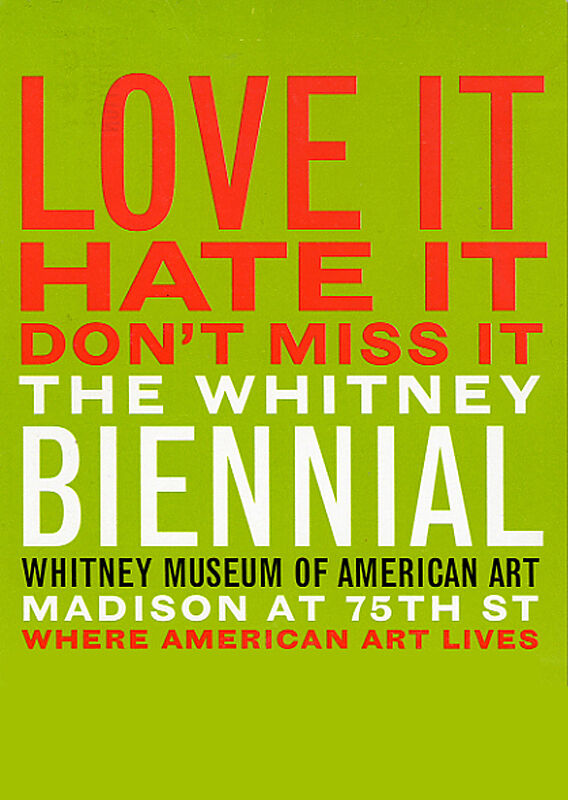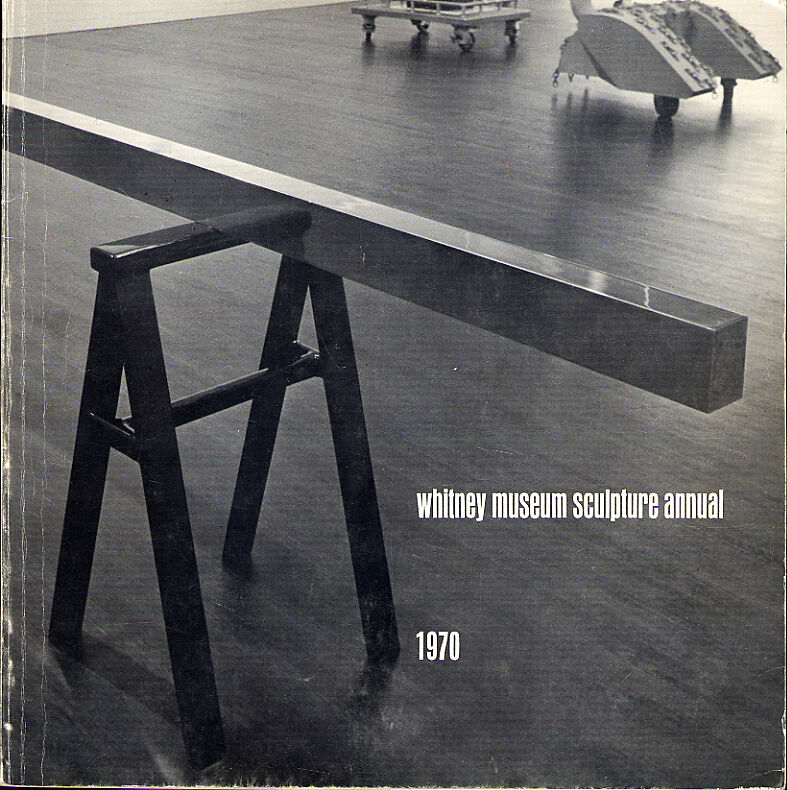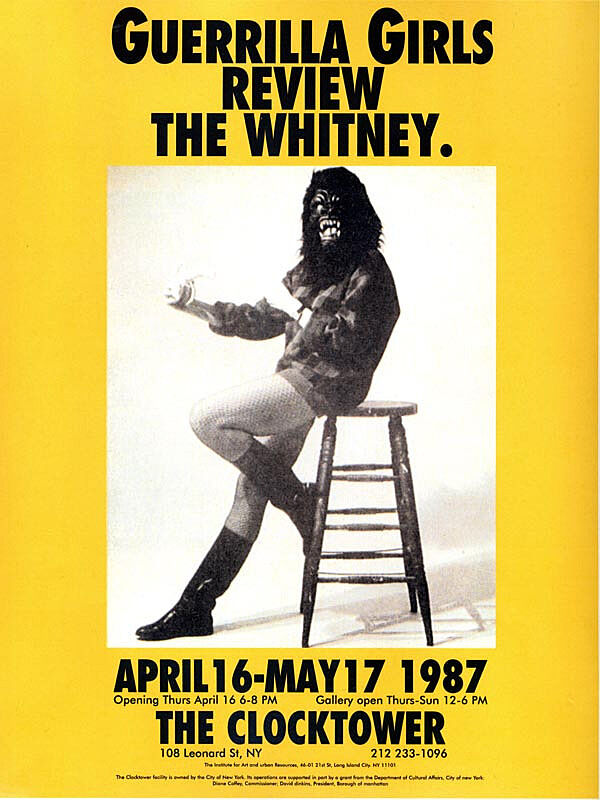The Biennial and Women Artists: A Look Back At Feminist Protests At The Whitney
May 3, 2010
The curators of this year's Biennial exhibition (2010) did not choose the artists specifically on the basis of gender or race, but 2010 is the first Biennial to include slightly more female than male artists: twenty-nine women and twenty-six men. This statistic has been a key point in much of the media's coverage of this year's exhibition.
Some of the most polarizing debates during the seventy-five-year history of the Whitney Biennial and Annual exhibitions have centered on the inclusion or absence of women artists and artists of color in the exhibition. Below, we take a closer look at two notable protests against the exclusion of women artists in past Biennials that are explored in From the Archive—an installation organized by the Education Department that features images, ephemera, and catalogues drawn from the Museum's archives—on view now at the Whitney.
1970: Ad Hoc Women's Art Committee
In 1970 the Ad Hoc Women's Art Committee, which included artists Poppy Johnson, Brenda Miller, and Faith Ringgold as well as critic Lucy Lippard, led a protest against the predominantly male Whitney Annual. The protesters sent a letter to the Museum demanding that fifty percent of the artists in the exhibition should be women with the additional stipulation that half of those women be black. They also staged artist demonstrations and sit-ins during the two and a half months leading up to the exhibition opening. Protesters went so far as to place tampons and uncooked eggs bearing the "fifty percent" message in the galleries and staircases.
In her memoir, Faith Ringgold describes some of the events of the campaign: "The Whitney Museum became the focus of our attention. We went there often to deposit eggs. Unsuspecting male curatorial staff would pick up the eggs and experience the shock of having raw egg slide down the pants of their fine tailor-made suits. Sanitary napkins followed... Generally, everywhere the staff went they found loud and clear messages that women artists were on the Whitney’s case." (Faith Ringgold, We Flew Over the Bridge: The Memoirs of Faith Ringgold, Duke University Press: 2005, pp 175-178.)
When the 1970 Sculpture Annual opened at the end of the year, it featured twenty women out of one hundred total artists. While this certainly didn't meet the fifty percent demand, it was a step in the right direction: the 1969 Annual only included eight women out of 151 artists.
1970: Ad Hoc Women's Art Committee
In 1970 the Ad Hoc Women's Art Committee, which included artists Poppy Johnson, Brenda Miller, and Faith Ringgold as well as critic Lucy Lippard, led a protest against the predominantly male Whitney Annual. The protesters sent a letter to the Museum demanding that fifty percent of the artists in the exhibition should be women with the additional stipulation that half of those women be black. They also staged artist demonstrations and sit-ins during the two and a half months leading up to the exhibition opening. Protesters went so far as to place tampons and uncooked eggs bearing the "fifty percent" message in the galleries and staircases.
In her memoir, Faith Ringgold describes some of the events of the campaign: "The Whitney Museum became the focus of our attention. We went there often to deposit eggs. Unsuspecting male curatorial staff would pick up the eggs and experience the shock of having raw egg slide down the pants of their fine tailor-made suits. Sanitary napkins followed... Generally, everywhere the staff went they found loud and clear messages that women artists were on the Whitney’s case." (Faith Ringgold, We Flew Over the Bridge: The Memoirs of Faith Ringgold, Duke University Press: 2005, pp 175-178.)
When the 1970 Sculpture Annual opened at the end of the year, it featured twenty women out of one hundred total artists. While this certainly didn't meet the fifty percent demand, it was a step in the right direction: the 1969 Annual only included eight women out of 151 artists.
1987: Guerrilla Girls
In 1987, the Guerrilla Girls, an anonymous feminist collaborative, organized their own exhibition, The Guerrilla Girls Review the Whitney, at The Clocktower, a non-profit New York gallery. The exhibition protested the lack of representation of women artists and artists of color in the Whitney's 1987 Biennial.
"They expected us to do a show of art we thought should be in the Biennial," one of the Guerrilla Girls explained. "Instead, we decided to do an exhibition of information exposing the museum's pathetic and worsening record on women and artists of color. All of the statistics came from the museum's own publications." (Guerrilla Girls, Confessions of the Guerrilla Girls, Perennial: 1995, p.46.) The data presented in their so-called "Banana Report" exposed the sexism and racism in the art world and brought attention to the group's cause. Today, the Guerrilla Girls continue to protest exclusionary politics as the self-proclaimed "Conscience of the Art World."
By Sarah Meller, Education Assistant



